A lot of my work via my Script Consultancy Script Advice is about helping writers shape their creative ideas for television.
It is one thing to have a lot of great ideas; characters, stories, things you want to say, but to ensure your best ideas don’t get lost or trickle down the drama drain, I want to take you through some tricks and tips that will ensure your drama stories are truly immersive and you will not only tick the creative box, but also the commercial one too.
There is an innate ability in all of us to tell a tale. We are hard wired to drag out a yarn over the dying embers of our ancestral fires, but not all of us can grab the attention of our audience and keep it.
That takes skill and that skill can be learned.

You must start with the Audience. For me, all stories are there to be shaped and presented to an audience. They are a big silent Elephant in the room for me, as soon as I read a one pager, or a treatment or a script.
All the time; I think in terms of ‘what will the audience make of this’.
And this ultimately, is the Commercial Mind set.
For even in ancient times, our ancestors knew that there is something powerful, something fundamental about sitting together, and listening to a voice tell a story.
And this power, albeit now channelled through various digital media outlets and various screens in our homes, is still there. The community feeling; that innate human condition to engage with story, and then to talk about them is still very strong in our Twitter, Facebook, Instagram world.
But still, I find, somewhere within the creative process, writers become too insular; it is a solitary activity after all – at least at the conception stage – and they forget the audience, or maybe they weren’t thinking of them to start with.
The story IDEA is not enough. To make an impact on screen the idea has to have STRUCTURE, INTENTION and DELIVERY.
I understand. I am a writer myself. You have to start with yourself. Alone. Contemplating the blank screen or page. And this is the scary bit – because yes, we all worry that the ideas won’t come.
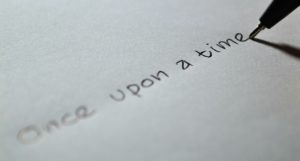
But we are writers. So they do. Because that’s what we do. We come up with stories and characters and scenarios and we do it all the time.
So once you’ve crossed that hurdle and there’s an idea formed; then in my world, from the Developer point of view, I say:
Start the Testing Process. Make sure your idea really does have a reason to be out there.
Because so many writers leave their best ideas at an embryonic stage. A single sheet with the beginnings of a story or perhaps a group of characters with some back story but no present time one.
And this is ok, of course, not every idea that pops into your head should, or even deserves to be taken further along the Development Path.
And the mind of a creative writer knows this. Innately.
But ideas can be over-looked. So as soon as the Creative Process begins, (and we all know that can happen at any time in any situation) then The Testing Process needs to start.
The Testing Process is what happens when you’ve had the idea and now you need to make sure and quickly too – that this idea is worth pursuing.
It’s like you are starting a conversation with not only yourself, but also ultimately the wider world.
The Creative process when it comes to Television Writing, is not a single dimensional entity.
It is multi-layered, and how you go about containing, channelling and structuring that many tentacled beast is what I want to write about here.
In the Garden Centre of Creativity, The Creative Process produces the brightly coloured flowers; the fragrant herbs and plump vegetables but Business holds the barrow handles and pushes it along the aisles towards the till.
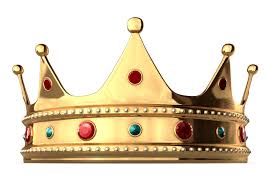
Content is King in Television. But your Barrow must not have any holes in it and the wheels need to be well oiled.
Art must hold on tight to Artifice; in great television drama writing it is hard to distinguish the art from the artifice, so rather than be juxaposed; these two essential components are wrapped around each other.
Forming a drama love hug as it where……
There is the poetry, of course, writing is an art form and television writing is no exception, but we also need structure behind the words and images to make the art go the distance and for this art to be a commercial success.
To some, the business of coming up with a fresh new idea that carries enough story for more than one episode of television can be a simple matter of layering the world,
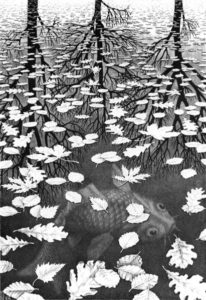
or for some writers, it is a chaotic and ‘splattery’ process; like as a Jackson Pollock painting.
Others have a more methodical approach. They have a system, or a series of systems – dare I say it – even a spread sheet – and this way their creative juices flow.
But what ever your process is, when you create dramatic ideas for television, you can be sure that you won’t get far along that procedural line before you will need to start structuring, shaping and containing your ideas.
And this is where the Commercial switch is flicked ON.
WHAT ARE THE ELEMENTS OF A COMMERCIAL STORY LINE?
* successful in terms of audience reach
In other words; it needs to pull in a rating and also be a good fit for the scheduled slot and the demographic it is aimed at.
In other words; it needs to pull in a rating and also be a good fit for the scheduled slot and the demographic it is aimed at.
* an effective return on the dramatic outlay
What’s the cost of this story line? What does it take to deliver it on screen in terms of money and people hours?
What’s the cost of this story line? What does it take to deliver it on screen in terms of money and people hours?
So often in series and soaps we see how Producers chase that ratings train by throwing a large proportion of their hard-pressed budget on stunts and visual effects in a quick-fix solution to a ratings slump. And in the short term, this pays dividends.
A truly cost effective story line is one that generates a mass reaction in its audience for no extra outlay.
That’s where the creative process kicks in to the commercial and really pays off for the production as a whole.
* a commercially successful storyline needs to be weighted with subtext.
Action is not enough. Plot is not enough.
TEXT MUST WORK WITH SUBTEXT and then a COMMERCIAL and CREATIVE story line is born.
The three components of a Commercial, Successful and Creative Story line are:
* STRUCTURE. * INTENTION. * DELIVERY
If a story line fails on the page or the screen this will because 1 or all 3 of these components were not present in the conception and the creation of the story line.
If a story line is to truly work on screen, it needs:
STRUCTURE:
* TO BE SET UP and METERED OUT INCREMENTALLY.
IT NEEDS TO BUILD TO A SERIES OF ‘PEAKS’ it needs TWISTS and it needs TO PAY OFF.
* TO BE SET UP and METERED OUT INCREMENTALLY.
IT NEEDS TO BUILD TO A SERIES OF ‘PEAKS’ it needs TWISTS and it needs TO PAY OFF.
INTENTION:
* TO BE CONCEIVED AT SOURCE WITH THE INTENTION TO ENGAGE VIA CHARACTER, TO CONNECT OTHER STORYLINES AND TO MAKE A COMMENT ABOUT THE MACRO WORLD OF THE SERIES.
* TO BE CONCEIVED AT SOURCE WITH THE INTENTION TO ENGAGE VIA CHARACTER, TO CONNECT OTHER STORYLINES AND TO MAKE A COMMENT ABOUT THE MACRO WORLD OF THE SERIES.
DELIVERY:
* TO BE DELIVERED WITH A CONTROLLED PACE AND AS VISUALLY AS POSSIBLE; WRITER AND DIRECTOR WORKING AS A TEAM.
* TO BE DELIVERED WITH A CONTROLLED PACE AND AS VISUALLY AS POSSIBLE; WRITER AND DIRECTOR WORKING AS A TEAM.
STRUCTURE:
The writer decides at the point of story line conception, to shape it; to metre it out – across the series arc as a whole and then across the episodes in increments.
The writer decides at the point of story line conception, to shape it; to metre it out – across the series arc as a whole and then across the episodes in increments.
Then the writer builds those increments into a ‘peak’ with a ‘pay off’ built in on the other side, in order to deliver full dramatic satisfaction.
I talk about THE MACRO V THE MICRO viewpoint a lot in my script development work with writers.
In series drama, a commercial and therefore successful storyline shows both viewpoints.
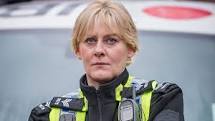
In Happy Valley for instance, Sergeant Catherine Cawood struggles with the suicidal death of her daughter as a direct consequence of giving birth to a child conceived by rape by a controlling sadistic psychopath named Tommy Lee Royce. She, via her work as a police officer in the Calder Valley, is investigating a series of murders of prostitutes – Tommy Lee Royce’s mother being one of them.
So across two series, we see that the macro story line – that of a series of seemingly random murders are linked back to Catherine’s personal story line; that of her dealings with Tommy Lee Royce and how, even though she arrested him at the end of series 1 for other murders; his presence emanating from jail is affecting her daily personal as well as professional life.
This MACRO v MICRO view point on a story line runs through all successful, commercial series.
The back drop – or Macro view point in Happy Valley is the valley itself and set within that, sits the police station – the place where the pivotal character Catherine Cawood works.
The Micro view – going in now as it where with our camera from the rugged beauty of the Pennines and into the daily lives of an ensemble of characters – is picked up by the title.
The title gives us an over view – a message. This is not a happy valley. But it looks that way because it is beautiful.
As Catherine says with a wry edge to her voice at one point in Episode 6 of series 2, when relating to her sister the back story of tortured mother Alison; ‘You know, like in a tale of every day Country Folk’ and then goes on to detail Alison’s abusive father and her forced pregnancy out of which she produced flawed and twisted Darryl; the young man now revealed to be the murderer of the prostitutes in the valley.

Everything from the story line structure, to the title itself is linked and relates back to each other in terms of theme and also ultimately message.
Commercially successful story lines and Series as a whole, are all about Connections and Structure.
There is a basic five act structure in television:
ACT ONE – HOOK The episode literally hooks into the next one like the coupling action of a train carriage. How strong or compelling you make that coupling, is one of the things that determines whether the series as a whole is successful and or commercial.
ACT TWO – TWIST IN THE MIDDLE – HOOK
ACT THREE – TWIST IN THE MIDDLE – HOOK
ACT FOUR – HOOK
ACT FIVE – PAY OFF/CLIFF HANGER
Each episode will have a similar structure but so will each story line.
In series television writing – we are structuring the story line to build to ‘tent poles’ or ‘peaks’ with a twist or extra engagement created somewhere in the middle section of the episode and also in the series narrative arc as a whole.
Controlling a Series Story line is a tricky thing to do – especially when you are called upon to control more than one story line and at the same time within a scene, and then in an episode; repeating that process across an hour of television.
Visualising helps:
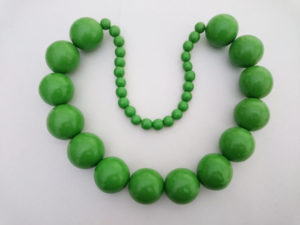
Here’s a necklace. A string, in a gentle loop. On it, hang several beads.
Each bead represents an episode of your series. There may be 3, there may be 6, 8 or more.
The string on which the beads hang, represents the series narrative arc.
A creative, commercial and therefore successful storyline exposes and describes the dual structure of a series. That is to say:
1. The Narrative Arc.
2. The Individual Episodes.
2. The Individual Episodes.
In order for your series story lines to truly pack a punch and to be a clear representation of your series; both these components need to work together; the beads must hang from the necklace and the necklace must link the beads together.
1. THE NARRATIVE ARC:
The narrative arc is the order in which your story lines unfold. Narrative explores how a story line is expressed across both the series as a whole, and also within each individual episode.
This is the constant in the series format. It never changes. It forms the bedrock of your series.
The Series Narrative Arc will also contain the THEME of your series.
Theme is that which lies beneath successful, commercial story lines.
This is what screenwriter John August calls the DNA of the series. It is what makes the story lines tick; the underlying subject matter of the drama as a whole.
Highlighting the THEME of the series story lines as a whole, is important to the dramatic health of your series because to quote John August again: ‘If you don’t pick a target, you’re unlikely to hit anything worthwhile’.
2. INDIVIDUAL EPISODES:
Back to that necklace with the beads hanging.
Each episode ‘bead’ is related to, and connected by, the narrative arc or ‘string’ of the series.
Each episode ‘bead’ is related to, and connected by, the narrative arc or ‘string’ of the series.
The story lines in each episode should connect back to the narrative arc.
For example: Holby City story lines always relate back to the day to day running of a busy specialist hospital.
Make sure your story lines relate back to your narrative arc in the same way.
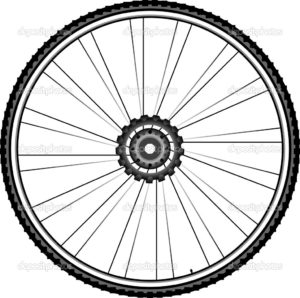
Again, using a visual, imagine that your story line is the spoke in a bicycle wheel. It radiates out from the centre to the edge of the episode.
I like to think of story lines as straight (as the name suggests) but also contained within a cyclical shape.
INTENTION:
Every successful and therefore Commercial story line will have a clear and consciously conceived connection to the central character carrying the story line and to the episode as a whole.
Character delivers story line in a commercially successful series.
Story line also shapes character.
Both these jobs are present and done well, in a story line that ultimately engages, resonates and remains in the mind for a time afterwards. In other words, in a commercial story line.
The character is created with the intention to carry the story line and the story line is created to shape and mould the character. This is a symbiotic relationship.
Commercially savvy, successful story line writers understand the power of character and the way the subtext of a character literally drives the story line through the duration of not only the individual episodes, but the series narrative as a whole.
Taking again Sally Wainwright’s series HAPPY VALLEY as an example, Catherine Cawood in Happy Valley is a complex, emotionally deep, troubled, funny, strong, sad, angry, loving character.
In two words; She Cares. So we do.
Her storylines are both professionally centric and personally focused.
We engage via the plot line of her Police work – the procedural nature of it – as well as via her dialect, her particular way of interacting with her peer group and her ‘take’ on her Valley (the micro) and her world that underpins it (the macro).
Sally Wainwright digs into the story lines via Catherine Cawood’s point of view.
She sits at the centre of the bicycle wheel of not only each episode but the series as a whole.
DELIVERY:
Always; the key to a Commercially successful story line is one that sticks in the mind of its audience.
Television is a visual medium. Savvy writers engage the visual in shaping and delivering their story lines. And by visual I don’t just mean a stunt – an explosion or a rock fall. These have their place, but I was thinking more about how in an image, a whole story line can be summed up.
And this is sometimes down to the just the writer. But when all the commercial successful buttons are pressed, I refer to the dual role of the director and the writer.
Back in the day, when I was developing drama series for Granada Television with writers like Sally Wainwright, Russell T Davies and Kay Mellor, there was always an emphasis on the SET PIECE.
Successful story lines; those honed out of the creative process to deliver commercially on screen, have a smattering (odd numbers seem to work better than even incidentally) of these across their length.
A set piece combines the big three essential commercial components:
STRUCTURE, INTENTION and DELIVERY.
STRUCTURE, INTENTION and DELIVERY.
It is when the plot line; complete with strong under tow of subtext, collides with the action/behaviour of a core character and results in a hiatus moment.
A visual, narrative driven and character imbued moment that sits almost in its own bubble, within the episode.

SUMMARY:
A Creative Story line told Commercially (and therefore successfully) will have the following vital elements:
1/ A ROCK SOLID STRUCTURE.
2/ A CONTROLLED AND ADDICTIVE PACE
3/ BE VISUALLY ENGAGING
4/ STRONG AND RELEVANT DIALOGUE
5/ THE MARRIAGE OF TEXT AND SUBTEXT WORKING TOGETHER
If your story lines aren’t cutting the creative v commercial mustard; get in touch. Work with me via my Development Packages and I can help you make your stories not only sing, but sell as well.
Happy Writing!

